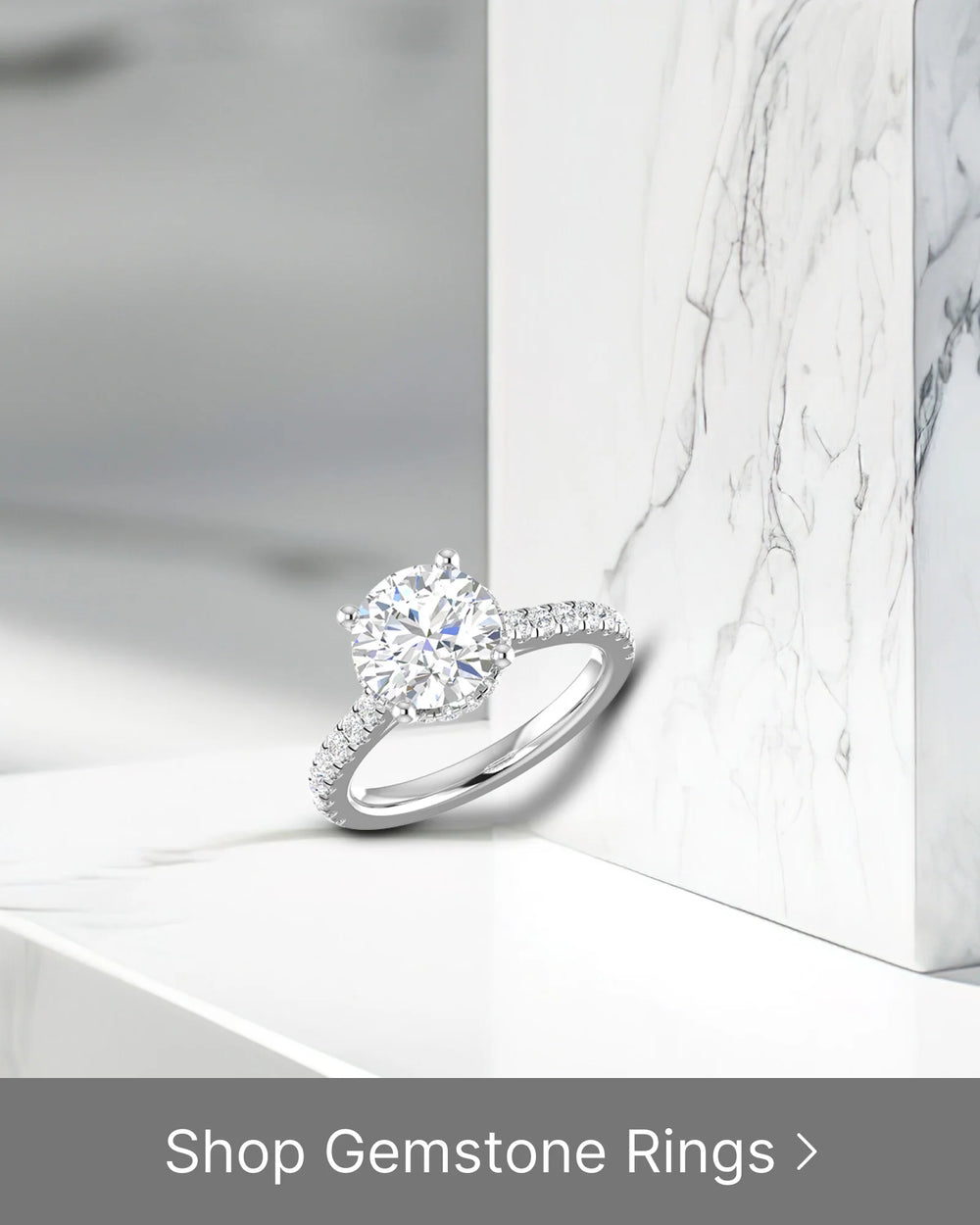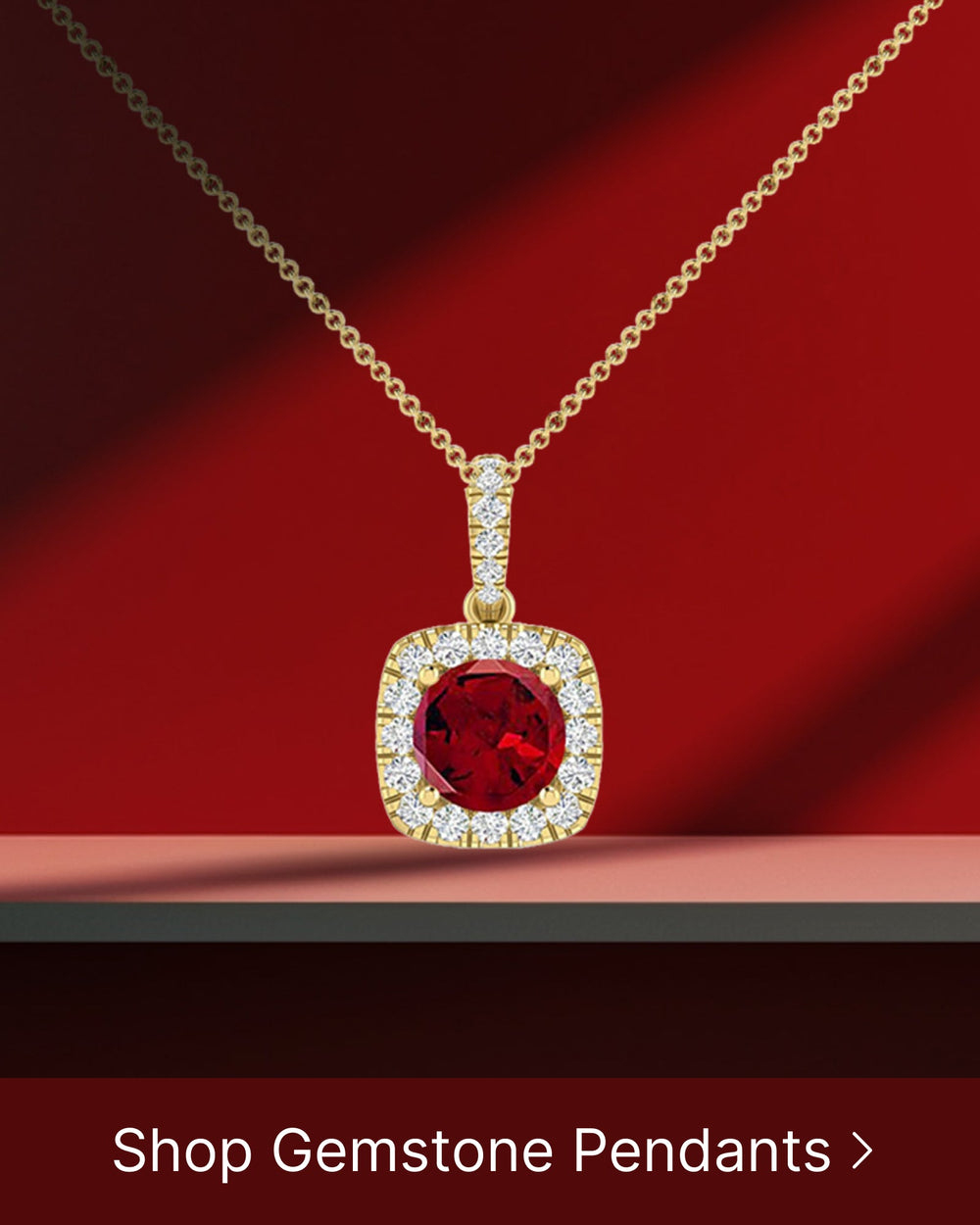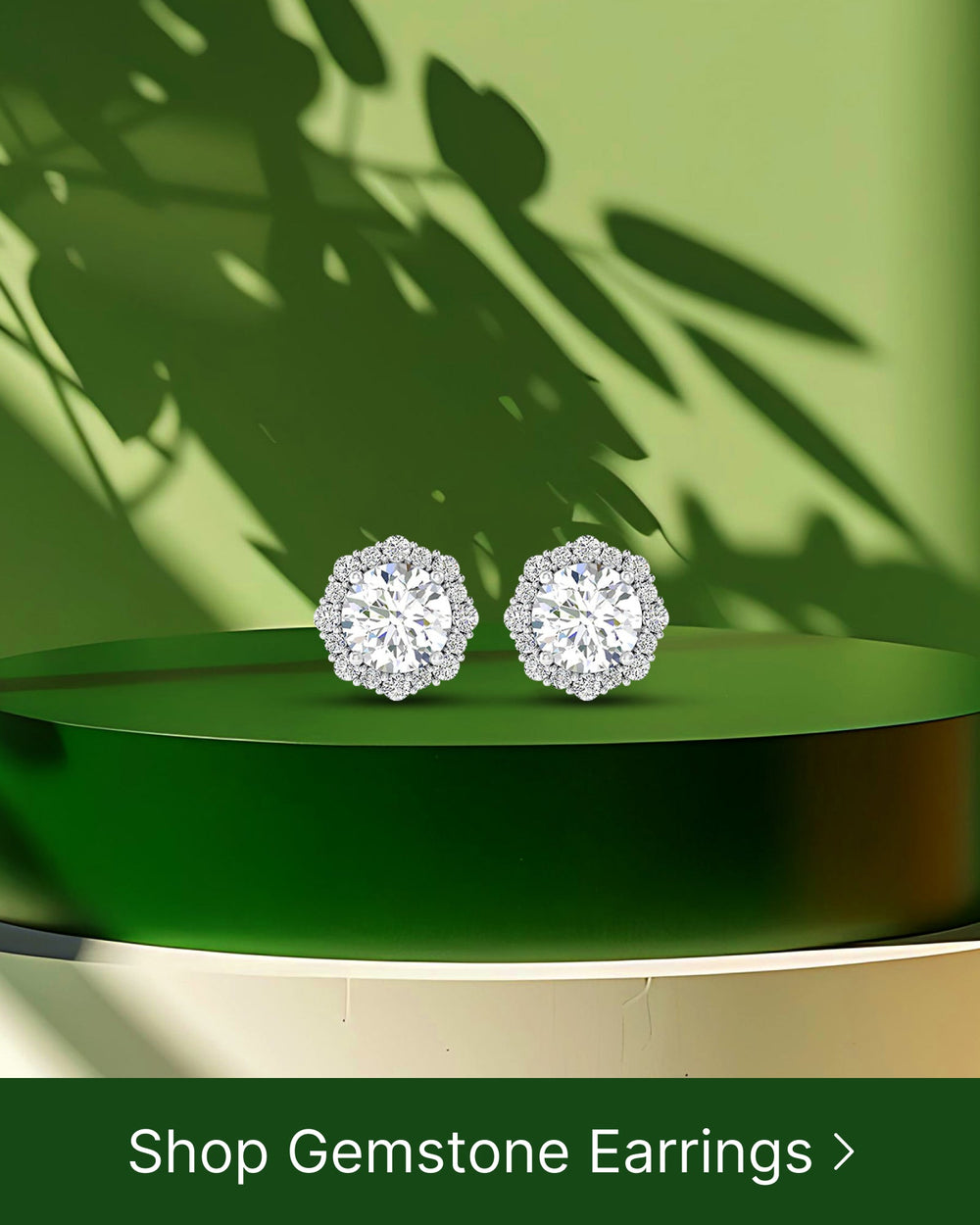Gemstone colors have long been associated with various meanings and symbolism, making them an intriguing choice for engagement rings. From vibrant reds to calming blues, each color carries its own significance that adds depth to the jewelry piece. Understanding the symbolism of these gemstone colors can help you make a more informed choice when selecting an engagement ring that truly reflects your personality and values.
Understanding the Significance of Gemstone Colors
When it comes to gemstone colors, their significance goes beyond their visual appeal. Different cultures have attributed meanings to these colors for centuries. Additionally, psychologists have studied the psychological impact of colors on human emotions and behavior, adding another layer of depth to their symbolism.
Gemstones have fascinated humans for thousands of years. From ancient civilizations to modern societies, the allure of gemstones has remained constant. The colors of these precious stones have captivated people's imaginations, leading to the development of various beliefs and traditions surrounding their significance.
The Cultural Importance of Gemstone Colors
Gemstone colors often hold cultural significance and can vary across different societies. For example, in many Eastern cultures, red symbolizes good fortune and happiness. This makes red gemstones like rubies and garnets popular choices for engagement rings.
In Chinese culture, the color red is associated with luck, joy, and prosperity. It is believed to ward off evil spirits and bring good fortune. Red gemstones are often used in traditional Chinese jewelry, especially during celebrations and important occasions.
On the other hand, in Western cultures, blue is often associated with loyalty and trust. This makes blue gemstones like sapphires a popular choice for engagement rings, symbolizing a deep and unwavering commitment.
Throughout history, gemstone colors have also been associated with specific qualities and virtues. For instance, green gemstones like emeralds have been linked to fertility and rebirth, while yellow gemstones like citrine have been associated with happiness and success.
The Psychological Impact of Gemstone Colors
Colors have the power to evoke emotional responses and convey different moods. For instance, blue is often associated with calmness and tranquility, making blue gemstones like sapphires an excellent choice if you are seeking a sense of serenity in your engagement ring.
Psychologists have long studied the effects of colors on human emotions and behavior. They have found that certain colors can stimulate specific psychological responses. For example, red is known to increase heart rate and create a sense of urgency, while green is believed to have a calming effect on the mind.
When it comes to gemstone colors, individuals may be drawn to certain hues based on their personal preferences and emotional needs. Someone seeking balance and harmony in their life may be naturally inclined towards gemstones with earthy tones like brown or green. On the other hand, someone looking for energy and vitality may be attracted to vibrant and fiery gemstone colors like red or orange.
It is important to note that the psychological impact of colors can vary from person to person. Cultural background, personal experiences, and individual perceptions all play a role in how colors are interpreted and felt. Therefore, the significance of gemstone colors can be deeply personal and subjective.
In conclusion, gemstone colors hold both cultural and psychological significance. They are not merely decorative elements but symbols that convey meaning and evoke emotions. Whether you choose a gemstone based on its cultural symbolism or its psychological impact, the color of a gemstone can add a layer of depth and personal significance to your jewelry.
The Role of Gemstones in Engagement Rings
Gemstones have played a significant role in engagement rings throughout history. From ancient civilizations to modern times, gemstones have been cherished for their beauty and symbolism.
But what is it about gemstones that make them so captivating? It goes beyond their physical appearance. Gemstones have a rich history and carry with them a sense of mystery and allure. They have been prized for their rarity and believed to possess mystical powers. In ancient times, royalty and nobility adorned themselves with gemstone-encrusted rings as a symbol of wealth and power.
Imagine being transported back in time to an ancient civilization, where gemstones were not only seen as decorative elements but also as talismans. Each gemstone was believed to have its own unique properties and abilities. For example, the deep blue sapphire was thought to bring wisdom and protection, while the vibrant emerald was associated with fertility and rebirth. People would carefully select gemstones for their engagement rings, not only for their beauty but also for the symbolism they represented.
Even today, heirloom engagement rings that feature exquisite gemstones hold a special place in many families. These rings are not just pieces of jewelry; they are a connection to the past, a link to previous generations. They tell stories of love, commitment, and the passing down of traditions.
Historical Overview of Gemstones in Engagement Rings
In ancient times, gemstones were admired for their rarity and believed to possess mystical powers. Royalty and nobility adorned themselves with gemstone-encrusted rings as a symbol of wealth and power. Gemstones like rubies, emeralds, and sapphires were highly sought after, not only for their beauty but also for the status they represented.
During the Renaissance period, gemstones took on a new role in engagement rings. They became a way for individuals to express their love and devotion to their partners. The use of gemstones in engagement rings became more widespread, and different stones were associated with different meanings. For example, the fiery red ruby symbolized passion and love, while the serene blue sapphire represented loyalty and fidelity.
As time went on, gemstone engagement rings continued to evolve. The Victorian era saw the rise of sentimental jewelry, with gemstones being used to spell out secret messages or convey hidden meanings. These rings became a way for couples to communicate their love in a discreet and romantic manner.
Modern Trends in Gemstone Engagement Rings
In recent years, there has been a surge in the popularity of gemstone engagement rings. Many couples are opting for non-traditional stones, moving away from the classic diamond. This shift in trends has opened up a world of possibilities, allowing individuals to express their individuality through gemstone choices.
Today, gemstone engagement rings come in a wide variety of colors and styles. From the vibrant green of an emerald to the deep purple of an amethyst, there is a gemstone to suit every taste and personality. Couples are no longer bound by tradition; they can choose a gemstone that holds personal meaning to them, whether it be their birthstone, a stone that represents their shared interests, or simply a stone that they find beautiful.
Furthermore, gemstone engagement rings are not limited to a single stone. Many designs feature a combination of gemstones, creating a unique and eye-catching look. This allows couples to create a ring that is truly one-of-a-kind, reflecting their love and commitment in a way that is as unique as their relationship.
As the popularity of gemstone engagement rings continues to grow, so does the appreciation for the stories behind these precious stones. Each gemstone has its own history, its own journey from the depths of the earth to the hands of the wearer. When you choose a gemstone engagement ring, you are not just choosing a piece of jewelry; you are choosing a symbol of love, beauty, and the enduring power of gemstones.
Exploring Different Gemstone Colors and Their Meanings
There are numerous gemstone colors to choose from, each with its own unique symbolism. Let's dive into some of the most popular colors and their meanings:
The Symbolism of Red Gemstones
Red gemstones symbolize passion, love, and vitality. They evoke a sense of power and intensity that can make a statement in an engagement ring. Ruby, known as the "king of gemstones," is a gorgeous red stone that has been coveted throughout history.
The Symbolism of Blue Gemstones
Blue gemstones represent tranquility, peace, and loyalty. They are often associated with open communication and emotional balance. Sapphire, with its deep blue hue, has long been a favorite among royalty and is a timeless choice for an engagement ring.
The Symbolism of Green Gemstones
Green gemstones symbolize nature, fertility, and growth. They are believed to bring harmony and prosperity. Emerald, with its vibrant green color, holds a special place in many cultures and is considered a symbol of rebirth and renewal.
Choosing the Right Gemstone Color for Your Engagement Ring
When choosing a gemstone color for your engagement ring, there are several factors to consider.
Factors to Consider When Choosing a Gemstone Color
Firstly, think about the symbolism that resonates with you and your partner. Consider the emotions you wish to evoke with your ring. Secondly, think about the practicality of the stone. Some gemstones are more durable than others and may better withstand daily wear. Lastly, let your personal style and aesthetic preferences guide you in selecting a gemstone color that embodies your unique taste.
Matching Gemstone Colors with Personality Types
Another interesting way to choose a gemstone color is by considering your personality type. If you are adventurous and passionate, a bold red gemstone may be a perfect fit. If you are calm and introspective, a serene blue gemstone might be more suited to your personality.
The Future of Gemstone Colors in Engagement Rings
Gemstone color trends evolve with time and reflect the changes in society. As we move forward, there are interesting predictions for how gemstone colors will continue to shape the world of engagement rings.
Predicted Trends in Gemstone Colors
Experts forecast that non-traditional gemstone colors will become increasingly popular. Unique and rare gemstones will gain prominence as couples seek to express their individuality and create truly one-of-a-kind rings.
The Impact of Social and Cultural Shifts on Gemstone Color Choices
As society becomes more diverse and inclusive, engagement ring choices are reflecting this change. Couples are embracing gemstone colors that embody their values and cultural heritage, leading to a beautiful tapestry of colors in the realm of engagement rings.
When it comes to selecting an engagement ring, the symbolism of gemstone colors adds a layer of meaning and personalization. Whether you choose a traditional gem or an unconventional hue, your engagement ring will become a cherished symbol of your love and unique journey together.







